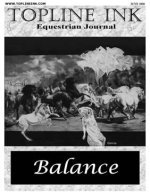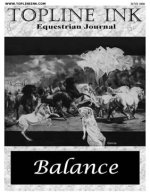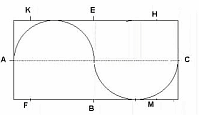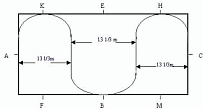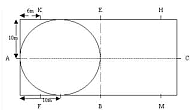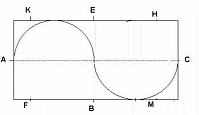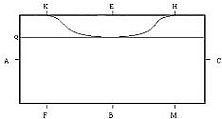ریتم کلمه ای آشنا برای سوارکاران,مربیان,داوران وتربیت کنندگان میباشد.
در زیر نظرات Jana wagner یکی از داوران تایید شدهUSDFرا درمقوله ریتم در درساژ میبینیم.
قوانین فدراسیون درساژ ایالات متحده توضیح میدهد که ریتم به توالی فرود وفازهای گام اسب اتلاق میگردد.
بر اساس همین قوانین ریتم های صحیح قدم, یورتمه وچهارنعل میباشد,ریتم را نباید باسرعت وتوازن در حرکت اشتباه گرفت.
ریتم یکی از ارکان درساژ محسوب می گردد.
من نمی توانم خیلی در اهمیت وضوح ریتم اصرار کنم,اسب نباید ضرورتا"دارای حرکت عالی باشد ولی اسبی با وضوح ریتم دارای امتیاز خوبی است مضافا" اینکه بدلیل تعادل بهتر آموزش راحت تری را دنبال میکند.
همچون یک تربیت کننده وقتی به یورتمه وچهارنعل یک کره نگاه میکنم توالی ثابت گامها اهمیت زیادی پیدامی کند.
در آموزش, تعادل یکی از مهمترین فاکتورهاست که پیشرفت آموزشی بیشتر راممکن میسازد وشما را در دستیابی به گامهای متوسط وکشیده کمک میکند واز مشکلاتی چون افتادن بر روی دستها ,عدم خود تحرکی و تعویض دست در گام چهارنعل دور می سازد.
آیا ریتم در حین آموزش اصلاح ویا بهبود می یابد؟
سئوال خوبی است اول به من اجازه بده بگویم که ریتم ممکن است با آموزش نادرست از بین برود,اتفاقی که با تجمع زود هنگام در گام قدم ویا همین تجمع در گام چهار نعل ضربآهنگ را از 3ضرب به 4 ضرب تغییر می دهد.
شما می توانید با انجام حرکات جانبی ریتم را بهبود ببخشید,اما نه بیشتر از طبیعت وتناسب اندامش.
یک سوارکاربرای بهبود یا حفظ ریتم حرکت چه کارهایی میتواند انجام دهد؟
علت اصلی از بین رفتن ریتم ,دستجلوهای سوار است,باید بسیار در میزان مقاومت بندها در برابر حرکت محتاط بوده واجازه حرکت طبیعی را به اسب بدهد که در غیر اینصورت باعث از بین رفتن تعادل ونتیجتا" از بین رفتن توالی فرود پاها برزمین می گردد.
ریتم هیچ ارتباطی با سریع وآهسته انجام شدن حرکت ندارد!
در زیر نظرات Jana wagner یکی از داوران تایید شدهUSDFرا درمقوله ریتم در درساژ میبینیم.
قوانین فدراسیون درساژ ایالات متحده توضیح میدهد که ریتم به توالی فرود وفازهای گام اسب اتلاق میگردد.
بر اساس همین قوانین ریتم های صحیح قدم, یورتمه وچهارنعل میباشد,ریتم را نباید باسرعت وتوازن در حرکت اشتباه گرفت.
ریتم یکی از ارکان درساژ محسوب می گردد.
من نمی توانم خیلی در اهمیت وضوح ریتم اصرار کنم,اسب نباید ضرورتا"دارای حرکت عالی باشد ولی اسبی با وضوح ریتم دارای امتیاز خوبی است مضافا" اینکه بدلیل تعادل بهتر آموزش راحت تری را دنبال میکند.
همچون یک تربیت کننده وقتی به یورتمه وچهارنعل یک کره نگاه میکنم توالی ثابت گامها اهمیت زیادی پیدامی کند.
در آموزش, تعادل یکی از مهمترین فاکتورهاست که پیشرفت آموزشی بیشتر راممکن میسازد وشما را در دستیابی به گامهای متوسط وکشیده کمک میکند واز مشکلاتی چون افتادن بر روی دستها ,عدم خود تحرکی و تعویض دست در گام چهارنعل دور می سازد.
آیا ریتم در حین آموزش اصلاح ویا بهبود می یابد؟
سئوال خوبی است اول به من اجازه بده بگویم که ریتم ممکن است با آموزش نادرست از بین برود,اتفاقی که با تجمع زود هنگام در گام قدم ویا همین تجمع در گام چهار نعل ضربآهنگ را از 3ضرب به 4 ضرب تغییر می دهد.
شما می توانید با انجام حرکات جانبی ریتم را بهبود ببخشید,اما نه بیشتر از طبیعت وتناسب اندامش.
یک سوارکاربرای بهبود یا حفظ ریتم حرکت چه کارهایی میتواند انجام دهد؟
علت اصلی از بین رفتن ریتم ,دستجلوهای سوار است,باید بسیار در میزان مقاومت بندها در برابر حرکت محتاط بوده واجازه حرکت طبیعی را به اسب بدهد که در غیر اینصورت باعث از بین رفتن تعادل ونتیجتا" از بین رفتن توالی فرود پاها برزمین می گردد.
ریتم هیچ ارتباطی با سریع وآهسته انجام شدن حرکت ندارد!

